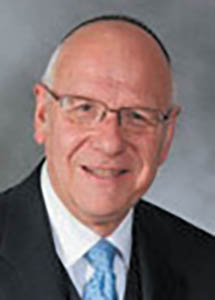
Parshat Vayera
How fitting is the selection for today’s haftarah, not simply in the stories that it relates but in the very fact that, as Professor P. Meltzer writes, it is the first time since starting the Torah reading cycle that the haftarah relates the accomplishments of the righteous, God-fearing individual, i.e., the navi Elisha, just as the Torah parsha now focuses upon the deeds of the righteous, God-fearing Avraham and Sarah.
The haftarah, taken from the fourth chapter of Melachim Bet, actually tells two stories. At first glance, the initial story seems to serve as mere introduction to the second. After all, the second and lengthier story of Elisha and the Shunammite woman appears to be closely connected to the events in our parsha, as it deals with the miraculous birth of a son to a once-barren woman and her elderly husband and the near loss of that cherished son to his parents. The parallels to the story of the birth of Yitzchak and Akedat Yitzchak are clear.
But the first story also echoes the events of the parsha quite powerfully. Here we read of a woman, widowed of her righteous, God-fearing husband (“v’ata yada’ta ki avdecha haya yarei et Hashem me’od”), who stands to lose her only two sons. In similar fashion, we read in the parsha of a righteous, God-fearing husband (“ata yada’ti ki y’rei E-lokim ata…”) who stands to lose both of his sons: Yishmael, whom he was told to send away, and Yitzchak, whom he was told to sacrifice.
However, as Rav Yehuda Shaviv explains, there is also an interesting contrast between the parsha and the haftarah in the behavior of two troubled, grieving mothers. In the Torah, we read of Hagar who, upon seeing (what she believes to be) the imminent death of her son, throws him beneath a bush and cries mournfully until the angel appears to her and tells her to return to the son she cast aside, “Kumi, s’ee et b’nech,—Get up and carry your son,” showing her the source of water that would revive him. In the haftarah, on the other hand, the Shunammite woman does not cast the child aside. Instead, she places her son on the bed of the prophet and travels to Elisha for Divine guidance. It is the prophet who then revives the child and says to the mother “s’ee b’nech—carry your son,” for he is alive.
In these difficult times, I am inspired when I see mothers and fathers, young and old, religious and not-yet-so, who do not lose hope in times of distress but look to God and the healing words of the prophet to guide a nation that many had thought dead and yet has been brought back to life.
By Rabbi Neil N. Winkler
Rabbi Neil Winkler is the founding rabbi of the Young Israel of Fort Lee. He now lives in Israel.










